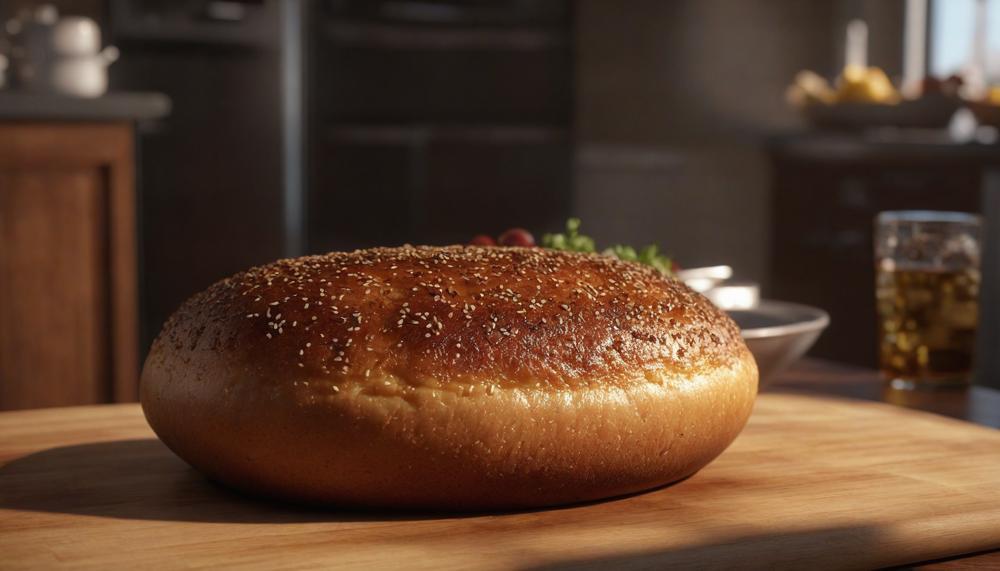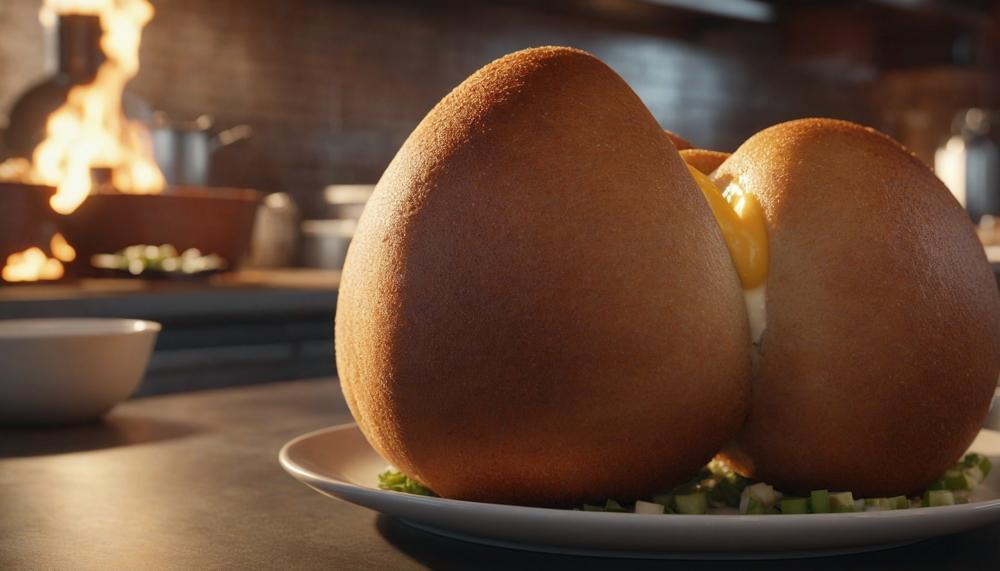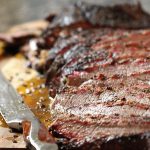Cooking a Boston butt can ignite passionate debates among barbecue enthusiasts, especially when it comes to the fat side. So, should you cook your Boston butt fat side up or down? The straightforward answer is: Yes. Both methods have their merits, and the choice largely hinges on your desired outcome. Here’s a quick rundown of what you need to know to make the best decision for your next BBQ session:
- Fat Side Up:
- Pros: As the fat melts, it bastes the meat, potentially keeping it more moist and flavorful.
- Cons: This can sometimes result in a less crispy exterior and may cause flare-ups in certain smokers.
- Fat Side Down:
- Pros: Promotes a crispier bark and can protect the meat from direct heat, preventing it from drying out.
- Cons: You might miss out on the self-basting effect that fat side up provides.
- Flipping Halfway:
- Pros: Combines benefits of both methods, ensuring even cooking and optimal moisture retention.
- Cons: Can be a bit tricky and requires more attention during cooking.
- Personal Preference andamp; Equipment: The type of smoker you use can impact which method works best. Facing the pork butt towards the heat source is a good general rule. However, your personal taste and cooking style should ultimately guide your decision.
Whichever method you choose, the key is to experiment and find what works best for you. Happy smoking.
Contents
What Is A Fat Cap?
The fat cap is the thick layer of fat that covers the top of a Boston butt, also known as pork shoulder. This layer plays a pivotal role in the cooking process, particularly when smoking or slow-cooking the meat.
The fat cap is instrumental in keeping the meat moist and flavorful. As the fat renders during cooking, it melts and bastes the meat, preventing it from drying out. This self-basting process enhances the tenderness and juiciness of the Boston butt, making it a favourite among barbecue enthusiasts.
However, it’s essential to strike a balance. While the fat cap helps in moisture retention, too much fat can lead to a greasy texture. Trimming the fat cap to about a quarter-inch thickness before cooking is a common practice to avoid this issue. This amount is sufficient to provide moisture and flavor without overwhelming the meat with greasiness.
Cooking methods also influence the treatment of the fat cap. Some pitmasters prefer to cook the pork butt fat side up, allowing the melting fat to permeate through the meat. Others advocate for cooking fat side down, which can create a crispy, caramelized exterior. Ultimately, the decision depends on personal preference and the specific setup of the smoker or grill being used.
Here’s a concise table summarizing the key points about the fat cap on a Boston butt:
| Aspect | Details |
| Definition | Layer of fat covering the Boston butt |
| Role in Cooking | Keeps the meat moist and adds flavor by self-basting as it renders |
| Optimal Thickness | Approximately 1/4 inch |
| Cooking Methods | Fat side up for basting, fat side down for a crispy exterior |
| Impact on Texture | Too much fat can lead to greasiness; trimming helps balance flavor and texture |
How To Buy A Pork Butt
When buying a pork butt for grilling, you should consider several key factors to ensure the best results.
Factors to Consider:
Cut Type and Marbling
- Choose a Boston butt or pork shoulder with good marbling. The intramuscular fat ensures the meat stays moist and tender.
- Look for a cut with a layer of fat on the outside. This fat layer helps to baste the meat during grilling, enhancing flavour and juiciness.
Weight
- Aim for a cut that weighs between 5-8 pounds. This size range is optimal for grilling, providing a balance between cooking time and meat quality.
Wood Chips for Smoking
- Use wood chips like hickory, apple, or cherry to add extra flavour.
- Soak the wood chips in water for 30 minutes before grilling to create smoke.
Grill Type and Preparation
- Both charcoal and gas grills work well. Preheat to medium-high heat and ensure the grates are clean and oiled.
- Consider using a meat thermometer to monitor the internal temperature, aiming for 195-205 degrees Fahrenheit for optimal tenderness.
Trimming and Seasoning
- Trim excess fat from the meat before seasoning. This allows for even cooking and prevents flare-ups.
- Season with a rub or marinade and let it sit in the refrigerator for at least 4 hours, but no more than 12 hours to marinate properly.
Cooking Tips:
| Factor | Details | Tip |
| Cut Type and Marbling | Boston butt or pork shoulder with good marbling and a fat layer | Ensures moist, tender meat |
| Weight | 5-8 pounds | Optimal size for grilling |
| Wood Chips | Hickory, apple, or cherry; soak for 30 minutes | Adds extra flavour |
| Grill Preparation | Charcoal or gas grill, preheated to medium-high heat | Clean and oil grates |
| Trimming and Seasoning | Trim excess fat, marinate 4-12 hours | Enhances flavour, prevents flare-ups |
Additional Considerations:
- Cooking Fat Side Up or Down: There’s debate over this. Cooking fat side up allows the fat to baste the meat, while cooking fat side down can give a crispier exterior. Choose based on personal preference and the type of smoker you’re using.
- Resting After Cooking: Wrap the pork butt in foil and let it rest before serving to let the juices redistribute, ensuring every bite is flavourful and juicy.
Cooking A Pork Butt Fat Side Up?
Cooking a pork butt fat side up is highly recommended for several reasons.
| Reason | Explanation | Benefit |
| Natural Basting | As the pork butt cooks, the fat renders and melts, seeping down into the meat. | Keeps the meat moist and adds rich, succulent flavour. |
| Enhanced Crust | The fat layer helps to develop a beautiful, crispy crust on the exterior of the pork butt. | Creates a delectable, textural contrast between the crispy outside and tender inside. |
| Flavor Infusion | The melting fat carries flavours from seasonings and smoke into the meat. | Results in a deeper, more robust flavour profile. |
By cooking with the fat side up, you ensure that the pork butt remains juicy and flavorful throughout the cooking process. This technique harnesses the fat as a natural basting agent, continually moisturising the meat and helping to form a delightful crust that many barbecue enthusiasts cherish.

Cooking A Pork Butt Fat Side Down?
The short answer is no, cooking a pork butt fat side down is not the best method for grilling.
Explanation:
Cooking the pork butt with the fat side up is generally preferred. When the fat side is up, the melting fat bastes the meat throughout the cooking process, which keeps it tender and juicy.
This method also helps create a delicious, crispy crust on the outside, adding a delightful texture to each bite. Moreover, placing the fat side down can lead to flare-ups, as the melting fat makes direct contact with the heat source, potentially causing unwanted charring.
Advantages of Fat Side Up
| Advantage | Description | Outcome |
| Basting Effect | Fat renders and bastes the meat naturally. | Juicy and flavorful pork butt. |
| Prevents Flare-ups | Fat drips away from the heat source. | Reduces risk of burning. |
| Better Crust | Fat helps in creating a crispy, tasty crust. | Enhanced texture and flavor. |
Additional Tips for Grilling Pork Butt
- Indirect Heat: Use indirect heat to cook the pork butt slowly, allowing the fat to render and the meat to become tender.
- Temperature Control: Maintain a consistent temperature, ideally around 225°F (107°C), to ensure even cooking.
- Resting Time: Let the pork butt rest for at least 15-20 minutes after cooking to redistribute the juices, making it more succulent.
Flipping The Meat During Cooking?
The short answer is yes, you should flip your Boston Butt during cooking, but not frequently. Flipping the meat helps in achieving an even cook and ensures a balanced bark formation.
Here’s the best approach to flipping your Boston Butt:
- Initial Placement: Start by placing the Boston Butt on the smoker grill, fat-side up. This allows the fat to render and baste the meat as it cooks.
- Flipping Schedule:
- First Flip: After 2-3 hours of cooking, flip the meat to fat-side down. This helps in developing a crust on the bottom side and ensures even cooking.
- Second Flip: Flip it back to fat-side up after another 2-3 hours. This flipping schedule helps to create a balanced bark and prevents any one side from becoming too charred or dried out.
- Monitoring:
- Keep an eye on the internal temperature using a meat thermometer. The target temperature is around 195°F to 205°F (90°C to 96°C) for optimal tenderness.
- During the final stages of cooking, refrain from flipping too often to maintain the integrity of the bark.
- Basting: Regularly baste or mop the meat every hour after the first flip to keep it moist and enhance flavour. Use a marinade made of acid, oil, herbs, spices, and aromatics.
Detailed Flipping and Basting Schedule
| Time Elapsed | Action | Notes |
| 0 hours | Place Boston Butt on the grill, fat-side up | Preheat smoker to 225°F (107°C) |
| 2-3 hours | Flip to fat-side down | Develops crust on the bottom |
| 4-6 hours | Flip back to fat-side up | Maintains moisture from fat rendering |
| Every hour after 3rd hour | Baste or mop | Enhances flavour and keeps meat moist |
| 8 hours | Check internal temperature | Target 195°F – 205°F (90°C – 96°C) |
Cooking With The Fat Cap Up or Down?
The recommended method for cooking a Boston butt on the grill is with the fat cap up.
Cooking with the fat cap up allows the fat to render down through the meat, enhancing its flavour and moisture. This method ensures that the meat remains juicy and tender during the long, slow cooking process.
| Step | Action | Notes |
| Preheating | Set grill to 225-250°F | Low and slow for even cooking |
| Indirect Heat | Burners on one side, meat on the opposite | Prevents direct heat exposure |
| Positioning | Place Boston butt with fat cap up | Allows fat to render and baste the meat |
| Cooking Time | 1.5-2 hours per pound | Monitor internal temperature |
| Optional Wrapping | Wrap in foil during last hour | Enhances tenderness and moisture |
| Resting | Rest for 20-30 minutes | Allows juices to redistribute |
| Serving | Slice against the grain | Ensures tenderness |
Conclusion
Choosing whether to cook a Boston butt fat side up or down is a matter of personal preference and desired outcome, rather than a strict rule.
Cooking fat side up allows the fat to melt and baste the meat, potentially keeping it more moist and flavorful. This method, however, may result in a less crispy exterior and can cause flare-ups in certain smokers. Conversely, cooking fat side down promotes a crispier bark and can protect the meat from direct heat, which helps prevent it from drying out. This method, though, might miss out on the self-basting effect.
An alternative approach is flipping the meat halfway through the cooking process, combining the benefits of both methods. This ensures even cooking and optimal moisture retention, though it requires more attention and careful timing.
The type of smoker you use can also impact the method’s effectiveness. Facing the pork butt towards the heat source is generally a good rule of thumb. However, your personal taste and cooking style should ultimately guide your decision.
Experimentation is key. Try different methods to see which one yields the best results for your BBQ sessions.






